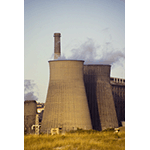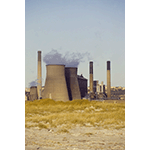Solvay Village
The factory of the Belgian Solvay Company was set up at the foot of the hill of Rosignano Marittimo in 1913, and began the production of soda one year later. Reclaimed between the 19th and 20th century, the area where the building was erected was chosen because of its nearness to the salt-mines of the Val di Cecina, indispensable in the production process of sodium carbonate, and because of the ease of communications (good road network, nearness to the sea, also useful for cooling processes, presence of the railway line built as of 1909).
Around the factory, the Company founded a workers’ village, organising an urban space with a clearly northern-European ascendancy with many green areas and a rationality that responded to the theorisation of the "city-garden". The lodgings were diversified on the basis of the workers’ professional profiles. There was housing for workers, housing for white-collar workers and villas for executives and the director. The village comprised other buildings, such as a hospital situated opposite the pine-wood on the edge of the industrial area, a pharmacy, an ice factory, post office, several buildings of the railway station, and elementary schools which successively provided professional training, and other structures of support to the activities of workers and their families.
Between 1924 and 1928, a theatre was also built. Conceived as a multifunctional hall and intended for both recreational and social activities, it was restructured only ten years later in order to adapt it to the demands of the community and the technical innovations of the period, such as the invention of sound films, which gained ground in Italy in the early 1930s.
Today in good repair, the village can be visited far and near, and testifies to a significant moment of industry in Tuscany.
****************************
Texts by Graziano Magrini
English translation by Victor Beard
Last update 22/gen/2008





